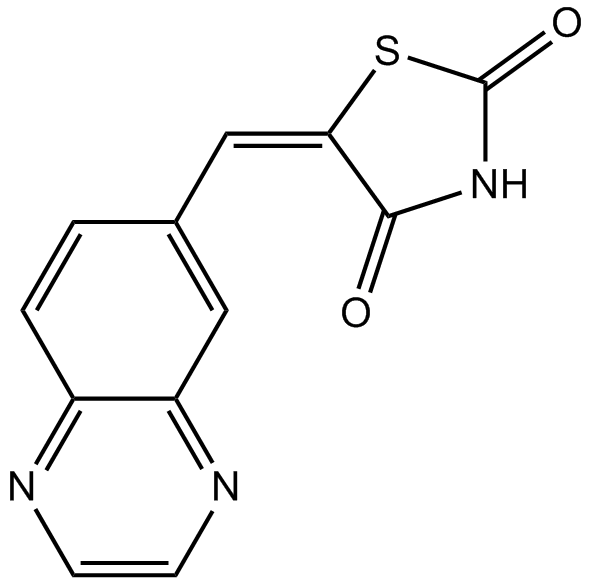AS-605240 |
| Catalog No.GC12474 |
Potent and selective PI 3-Kγ inhibitor
Products are for research use only. Not for human use. We do not sell to patients.

Cas No.: 648450-29-7
Sample solution is provided at 25 µL, 10mM.
AS-605240 is a selective PI3K γ inhibitor with an IC50 of 8 nM. [1]
PI3Ks are a family of enzymes, which phosphorylate the 3’- OH position of the inositol ring of phosphoinositides.They have been divided into three classes on the basis of structural features and in vitro lipid substrate specificity. The three class-Ia PI3-kinases (p110 α / β / δ ) and the sole class-Ib PI 3-kinase (p110 γ ) couple growth factor receptors and G-protein-coupled receptors, respectively, to a wide range of downstream pathways. Signal transduction via the PI3K/Akt pathway is essential for regulating cellular responses, including proliferation, survival, migration, motility and tumorigenesis, in a variety of cell types. The key selectivity features were identified by co-crystallization with PI3Kγ, which revealed that thiazolidinedione nitrogen makes a salt – bridge interaction with the side chain of Lys-833, and also forms the link to Val-882.[1,2]
AS-605240 is a cell permeable inhibitor for PI3Ks and inhibits p110 α/β/γ/δ in vitro?with IC50 values of 0.06, 0.27, 0.008 0.3 μΜ, respectively. AS-605240 was tested its ability to inhibit C5a-mediated PKB phosphorylation in RAW264 mouse macrophages and AS-605240 showed an IC50 of 0.09 mM. [1]
As in many in?ammatory processes, neutrophils are predominant in the initial in?ux of leukocytes, followed by monocytes-macrophages and lymphocytes. in vivo efficacy in blocking leukocyte migration assays were conducted, AS-605240 was tested in two different mouse models of peritonitis, including RANTES-induced or thioglycollate, the outcome showed ED50 of 9.1 mg/kg and 10 mg/kg respectively. AS-605240 also show that it is an orally active, selective PI3Kγ inhibitor suppresses joint inflammation and damage in a mouse model of collagen-induced arthritis.[1]
References:
[1]. Camps M, Rückle T, Ji H, et al. Blockade of PI3Kγ suppresses joint inflammation and damage in mouse models of rheumatoid arthritis[J]. Nature medicine, 2005, 11(9): 936-943.
[2]. Marone R, Cmiljanovic V, Giese B, et al. Targeting phosphoinositide 3-kinase—moving towards therapy[J]. Biochimica et Biophysica Acta (BBA)-Proteins and Proteomics, 2008, 1784(1): 159-185.
Average Rating: 5 (Based on Reviews and 33 reference(s) in Google Scholar.)
GLPBIO products are for RESEARCH USE ONLY. Please make sure your review or question is research based.
Required fields are marked with *




















